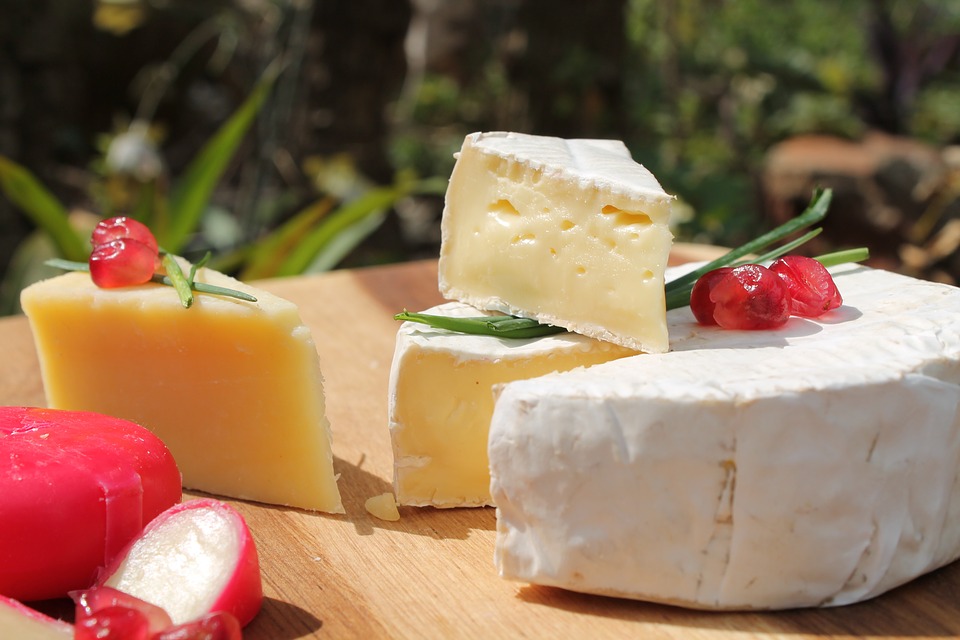I hope you’ve been enjoying our little excursion through the world of French cheese. If you dislike the taste of cheese or have never tried a sampling of French cheeses, a basic knowledge of some of the most famous varieties may prove useful someday if you decide to visit France for the first time. Should you find yourself devant un plateau de fromage (before a cheese tray), gazing in wonder at the different shapes and colors laid out in front of you, I hope you remember a few details from these posts.

You might not wish to become a cheese expert, but you will no doubt begin to cultivate une appréciation pour l’histoire et la tradition (an appreciation for the history and tradition) of centuries of French cheese. After all, who can call themselves a Francophile without at least acknowledging France’s mastery of all things fromage?
On that note, let us continue our foray into the cheese universe by exploring two of my favorites.
Cantal
Un fromage ancien (an ancient cheese) whose origins stretch back nearly two millennia, Cantal comes from the Auvergne region in central France, more precisely from the Cantal department, home to a beautiful range of montagnes vertes (green mountains) called the Cantal Mountains. The volcanoes in the area are surrounded by de la terre fertile (fertile land) with pastures perfect for grazing.
A heavy and dense cheese, Cantal is made from cow’s milk and shaped into cylinders with a light brown rind. Cantal has un goût distinct (a distinct flavor) reminiscent of nuts. Paired with fruit or melted into soups or fondue, Cantal is sure to entice even the most incredulous cheese critic.
Reblochon
Reblochon may not have the rich history or cachet of Cantal, but it has a fascinating history nonetheless. Reblochon est un fromage très crémeux (is a very creamy cheese) from the Savoie region, similar to Brie in consistency. Du lait cru de vache (raw cow’s milk) produces Reblochon and in fact the name Reblochon comes from the verb reblocher, a technique used by farmers in centuries past whereby a cow was not fully milked so as to withhold the full supply of milk to be paid as tax to landowners. The remaining milk produced by the second milking was richer and used to produce cheese.
Reblochon must be turned every two days and washed with whey. You will notice un arôme d’herbes (an herbal aroma) that is quite pleasing. Because of its soft consistency, Reblochon is excellent when spread on a baguette and paired with a bold red wine or even a light white wine from the Savoie region.





